
Choosing an ABM platform can feel tougher than running ABM itself.
The market is noisy, the promises are loud, and plenty of marketers admit they jumped into shiny software without mapping needs first, which led to either bloated overkill or an underpowered setup.
This guide fixes that with a clear, practical look at the best ABM platforms examples regarding where each one actually fits by team size and motion, so you can match the platform to your GTM instead of the other way around.
Read on to find your fit.
| ABM Platform | LinkedIn Ads Integration | Direct API Integration | Real-Time Engagement | Multi-Channel Ads | Intent Data (3rd-party) | CRM Integration | AI Predictive Analytics | Community/Organic Tracking | Pricing (Entry-level) | Best for |
|---|---|---|---|---|---|---|---|---|---|---|
| ZenABM | ✅ | ✅ | ✅ | ❌ | ❌ | ✅ | ❌ | ❌ | Low | LinkedIn-centric ABM |
| Demandbase One | ✅ | ✅ | ✅ | ✅ | ✅ | ✅ | ✅ | ❌ | High | Enterprise ABM |
| 6sense | ✅ | ✅ | ✅ | ✅ | ✅ | ✅ | ✅ | ❌ | High | AI-driven ABM |
| Terminus | ✅ | ❌ | ✅ | ✅ | ✅ | ✅ | ❌ | ❌ | High | Sales & Marketing alignment |
| RollWorks | ✅ | ❌ | ✅ | ✅ | ✅ | ✅ | ✅ | ❌ | Medium | Ad-focused ABM |
| Common Room | ❌ | ❌ | ✅ | ❌ | ❌ | ✅ | ✅ | ✅ | Medium | Community-led ABM |
| Factors.ai | ✅ | ❌ | ✅ | ❌ | ✅ | ✅ | ✅ | ❌ | Flexible | Analytics-focused ABM |
ZenABM is a plug-and-play ABM analytics platform purpose-built for LinkedIn advertising ABM.
From LinkedIn ad engagement tracking to connecting it to a real pipeline, it has everything you need for running ABM on LinkedIn.
Here’s what ZenABM offers:
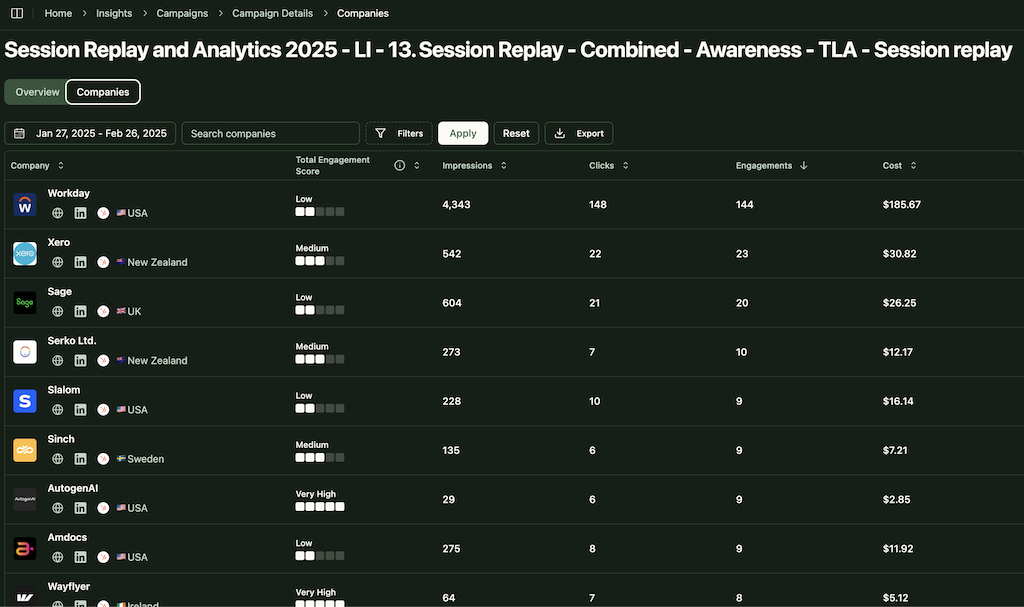
ZenABM retrieves first-party, account-level data for each LinkedIn ad campaign directly from LinkedIn’s official API.
This is something rare. Even many ABM giants don’t provide this and rely on browser cookies or unreliable IP matching.

The platform automatically scores each account’s engagement on LinkedIn in your chosen timeframe (say, the last week). This “current engagement score” updates continuously and surfaces the hottest accounts right now, not just historically.
The benefit is straightforward. Sales knows which target accounts are surging in interest and can time outreach better. A historic engagement score is also available in ZenABM.
ZenABM, with its own engagement score and CRM data, can track the ABM stage of each account.

The thresholds for each stage are customizable.
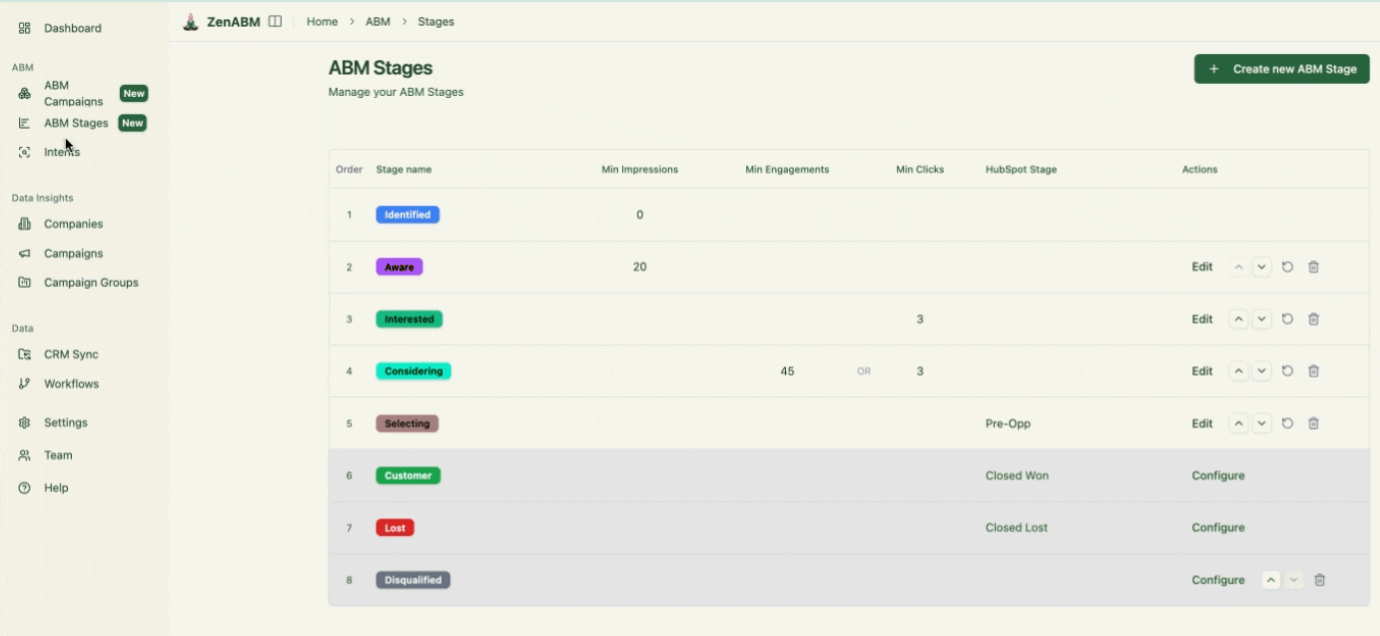
And as ZenABM can track ABM stages of accounts, it lays down movement of accounts through stages so you can pinpoint friction.


ZenABM pushes LinkedIn engagement into your CRM and can auto-assign BDRs when an account crosses a threshold like “Interested.”

Running multiple LinkedIn campaigns for different value props or features?
ZenABM lets you tag campaigns by intent topic and then shows which accounts engage with which themes. The signal is pushed to CRM for sales activation.
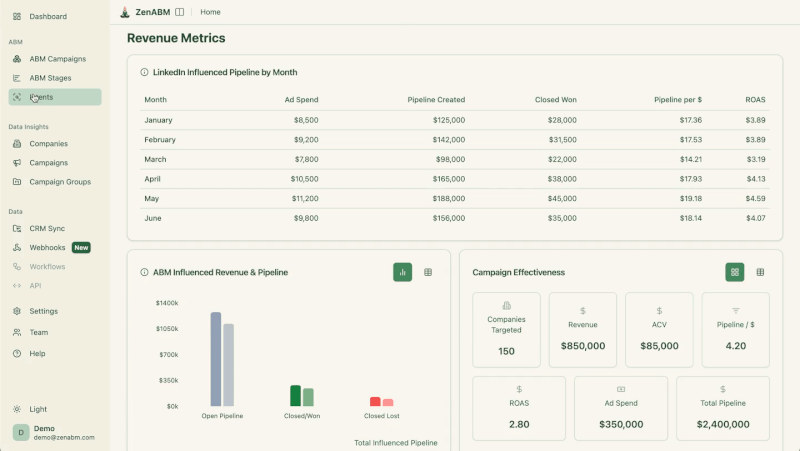




Like larger suites, ZenABM provides out-of-the-box dashboards that tie exposure to engagement, stage progression, and pipeline.
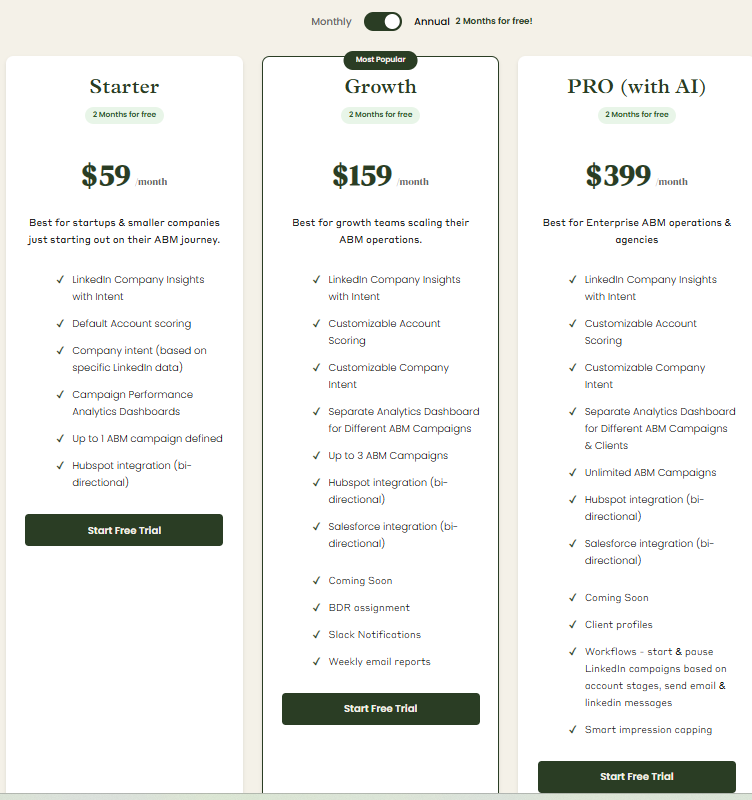
Plans start at $59 per month. All core LinkedIn ABM features are included.
ZenABM is specialized for LinkedIn. If you need multi-channel ad buying or web personalization in one place, pair it with other tools.
Teams whose ABM motion is LinkedIn-first. Fast setup, clear account-level insights, and pricing that does not wreck budgets make it one of the best ABM platforms examples for social-led ABM.

Demandbase One is a full enterprise suite that covers account list building, multi-channel advertising, web personalization, people-based targeting, and attribution.
Here’s a quick tour of its features:
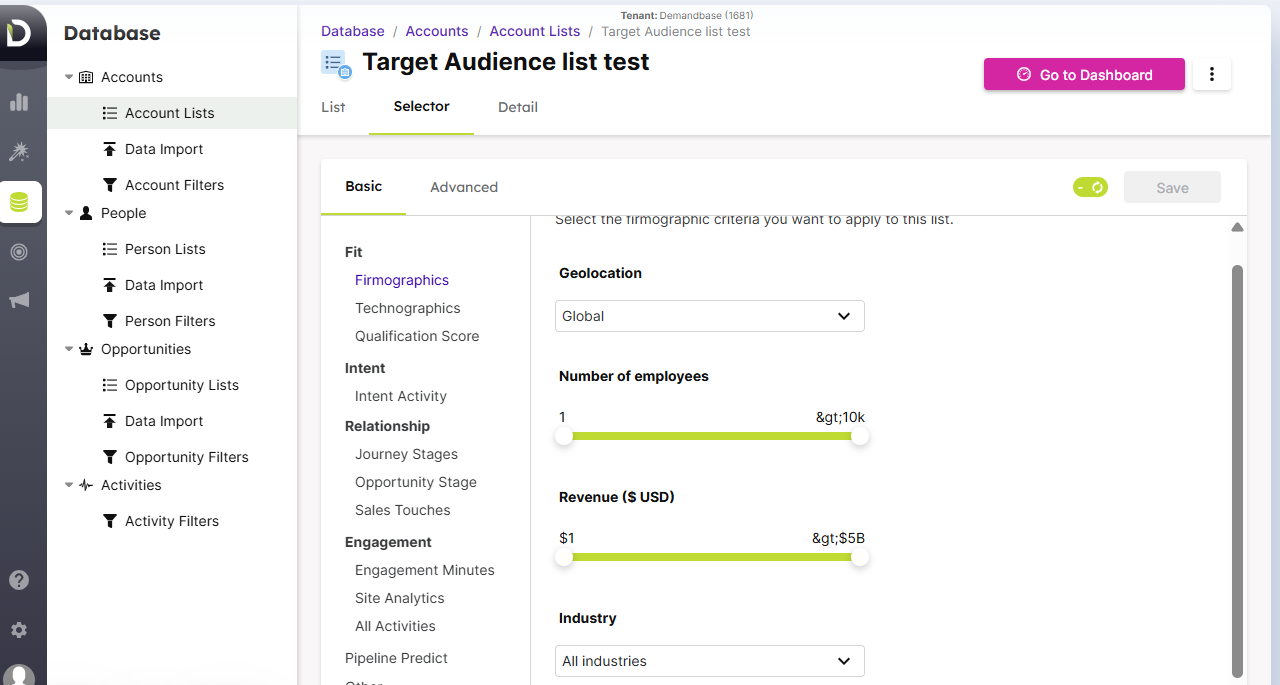
Build and refine Target Account Lists using first and third-party data, with AI suggestions by firmographics, technographics, and intent.
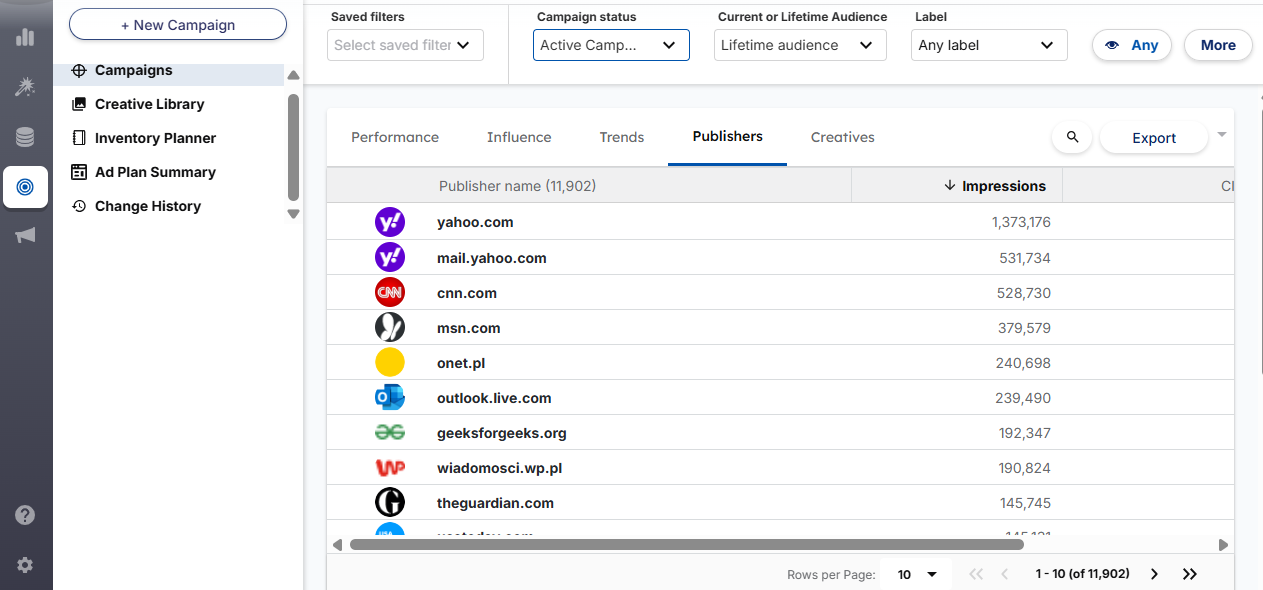
Run programmatic display, retargeting, native, and CTV. Manage LinkedIn, Facebook, Twitter, and YouTube inside the platform, with account-level frequency capping and AI spend optimization.
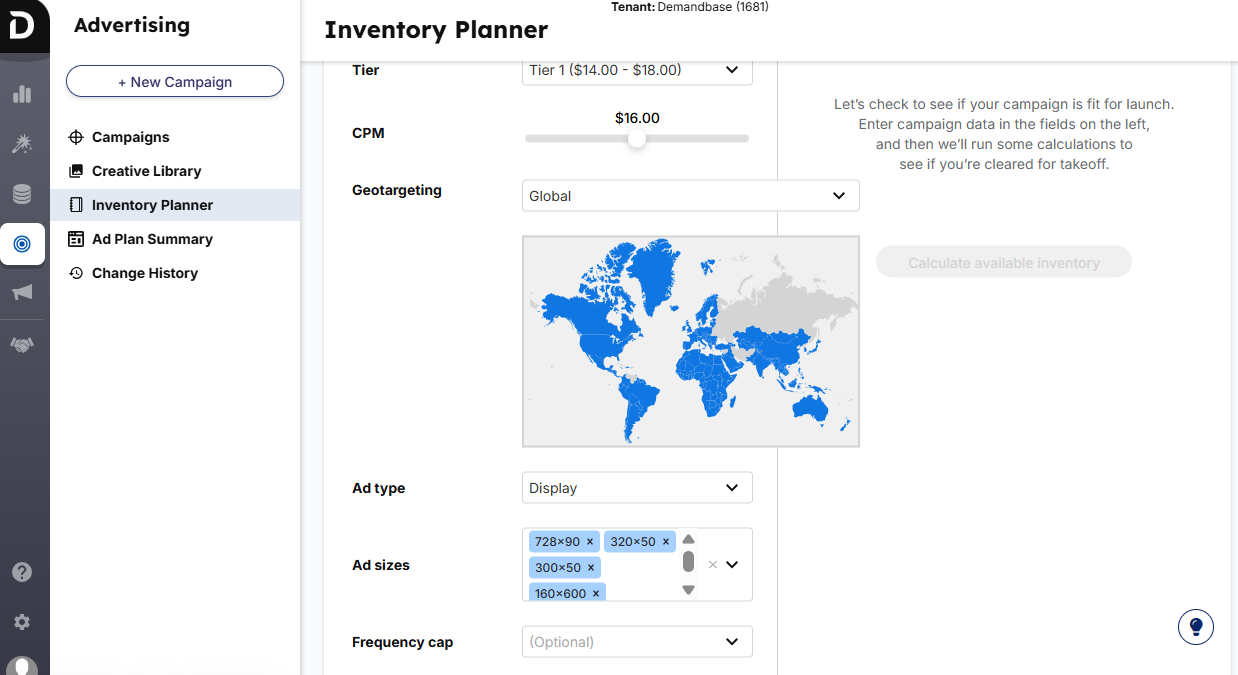
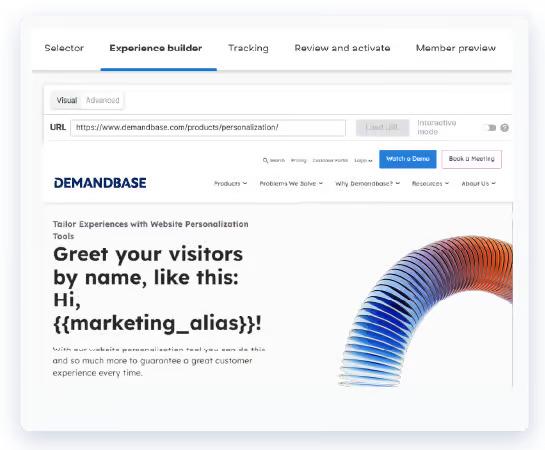
Personalize site experiences by account or cluster. Spin up account-specific pages and greetings that reflect industry and stage.
Pull in third-party intent with first-party signals to build 360-degree account views across topics and activity.
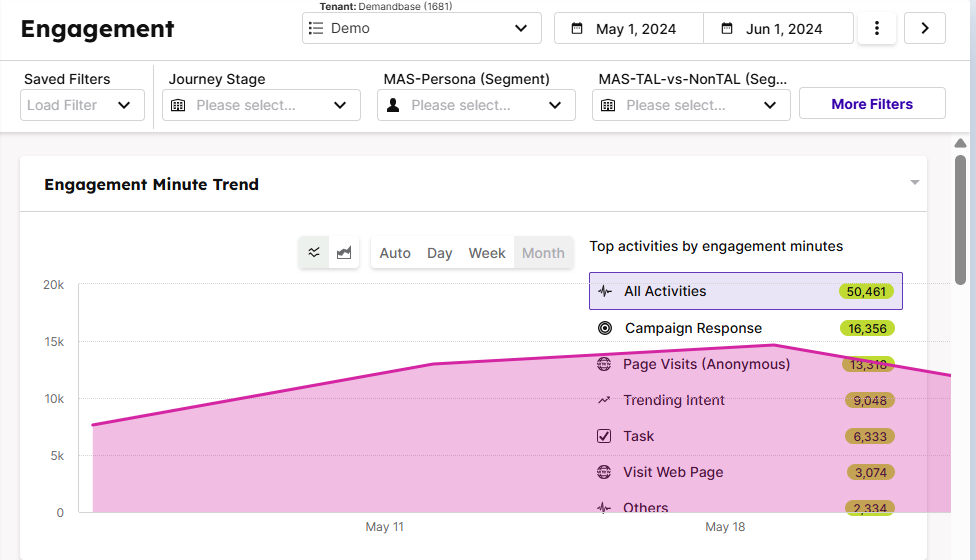
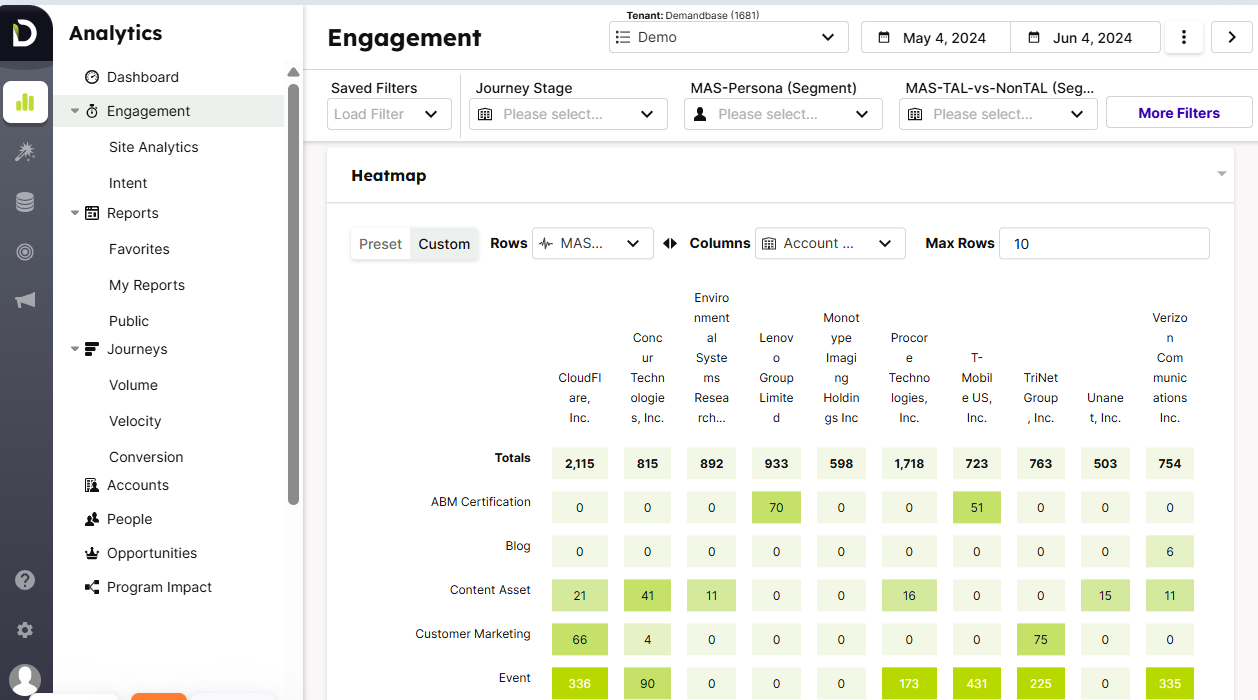
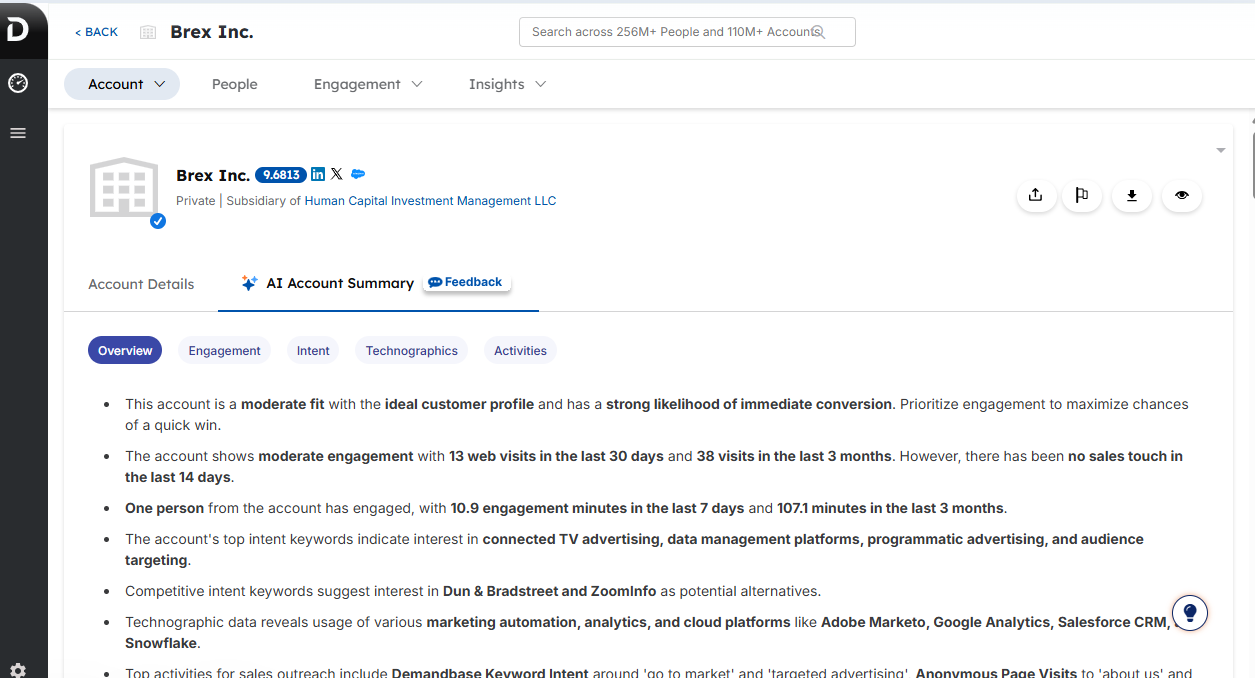
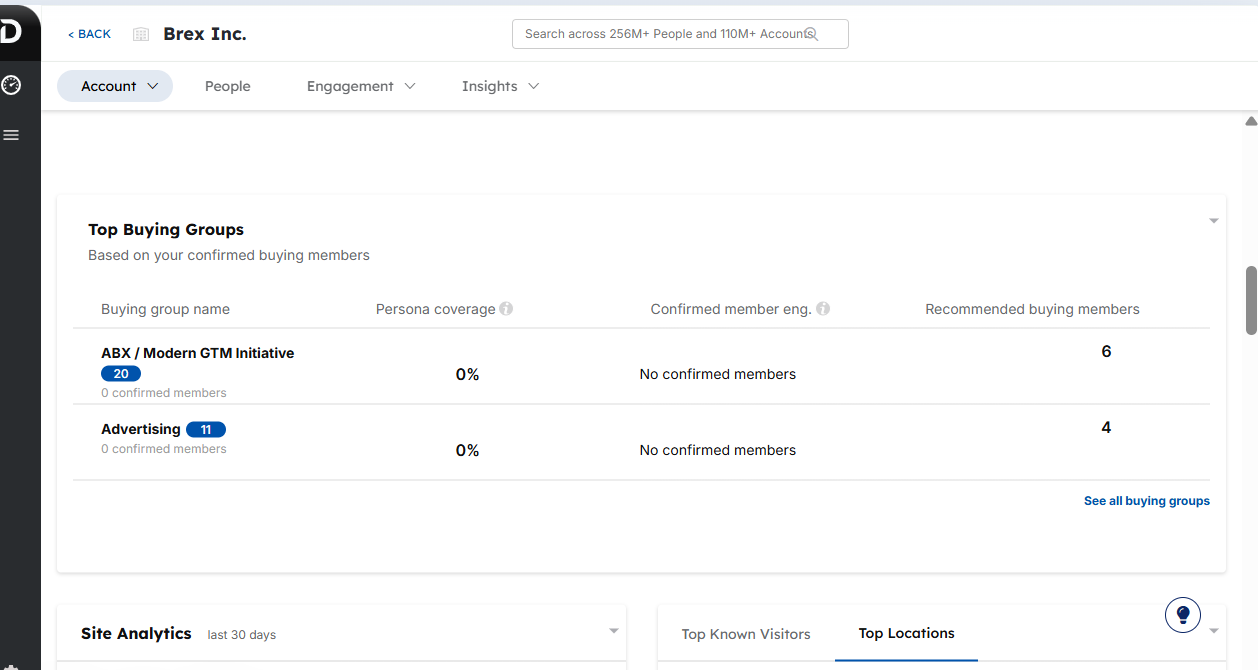
Target decision-makers by role and build buying committees with connected contact data.

Dashboards cover engagement, journey progression, and influenced pipeline. AI adds pipeline prediction to focus reps where probability is highest.

Connect CRMs, MAPs, and sales tools. Module for Sales surfaces account insights directly inside their daily view.
A leading example is when you need one platform for ads, intent, web personalization, analytics, and sales enablement at scale.
Complexity and cost. Easy to overspend if your motion is narrow.
Large B2B teams with thousands of accounts and multi-channel plays. Great if you want to replace several point tools with one suite.
6sense focuses on predictive intelligence that unifies anonymous and known signals and turns them into next-best actions.
Identify likely visiting companies and connect them to account records.
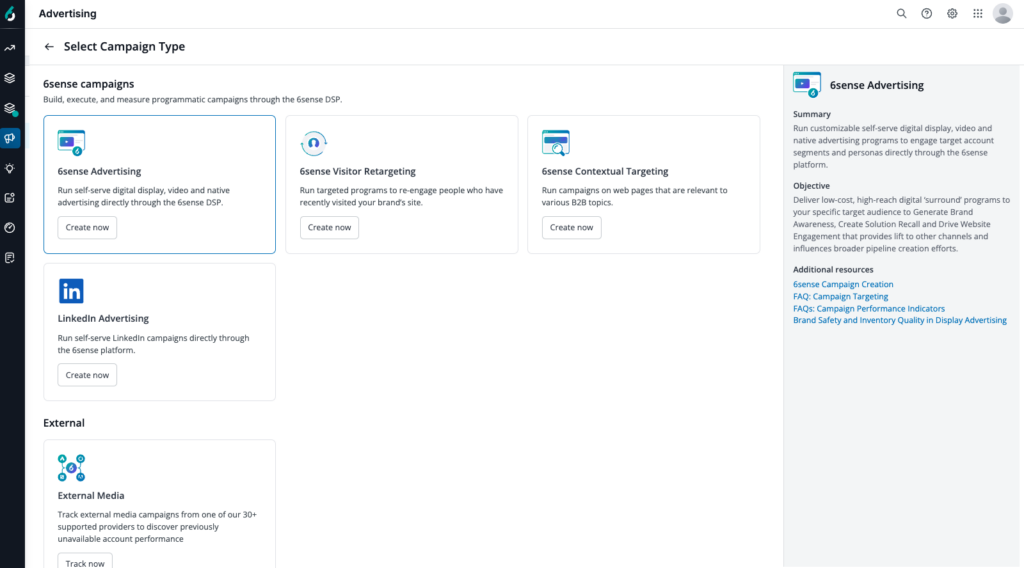
Run programmatic and social, coordinate sequences, and trigger website personalization through integrations.
Models combine firmographics, web signals, third-party intent, and engagement to label stages and predict close likelihood.
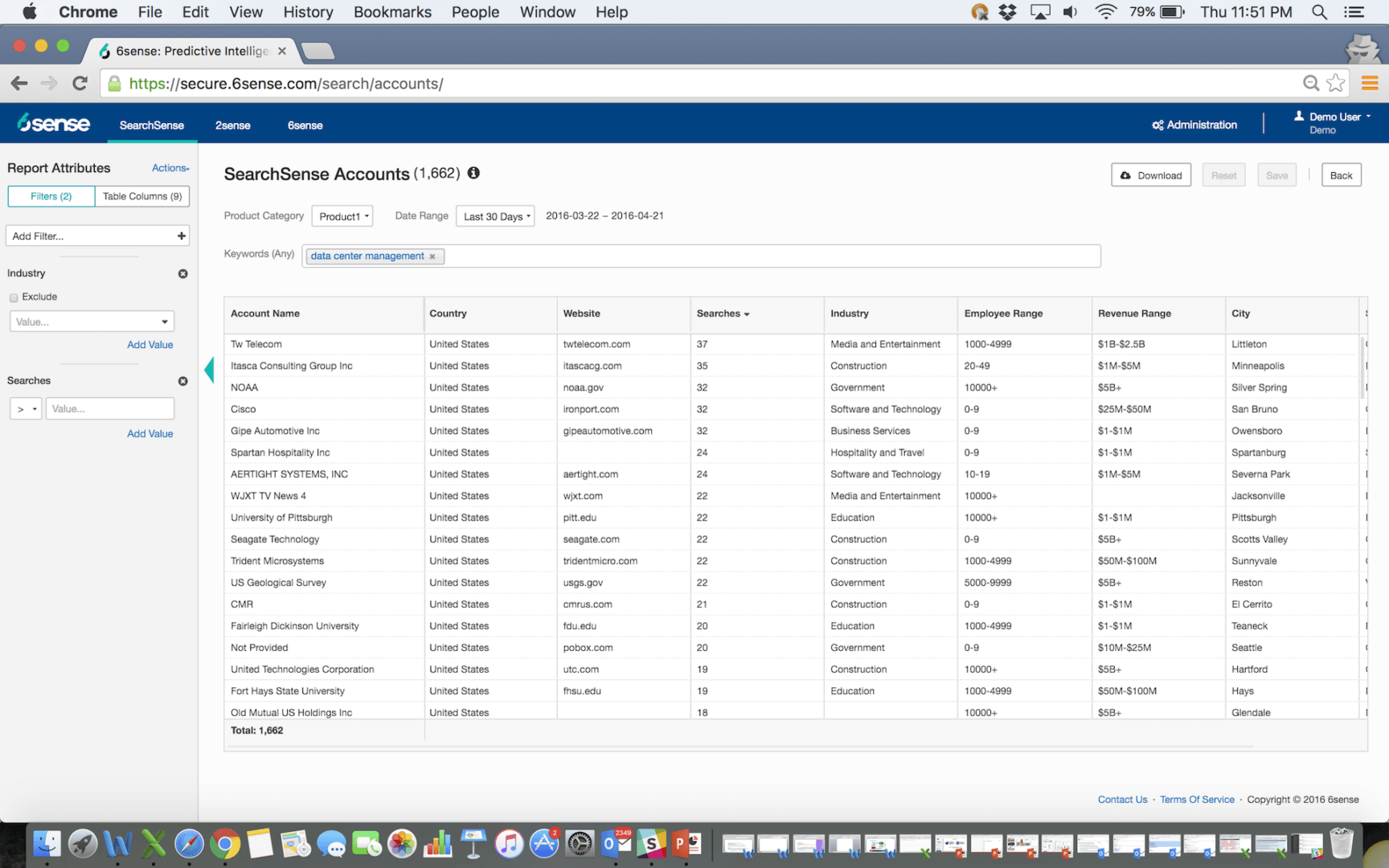
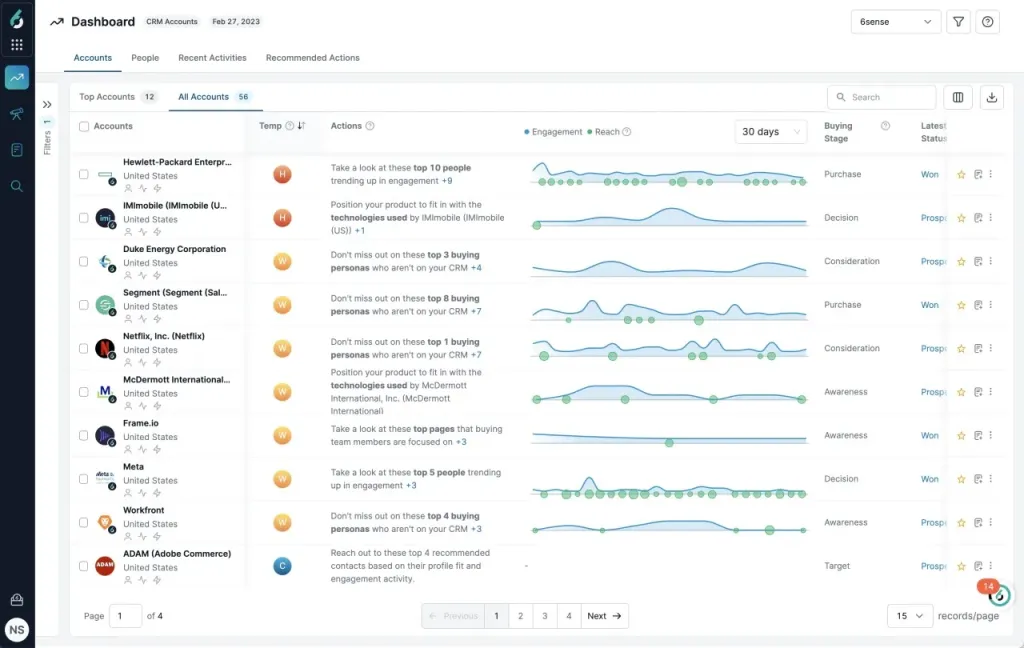
Combine first, second, and third-party intent for a wider signal net.
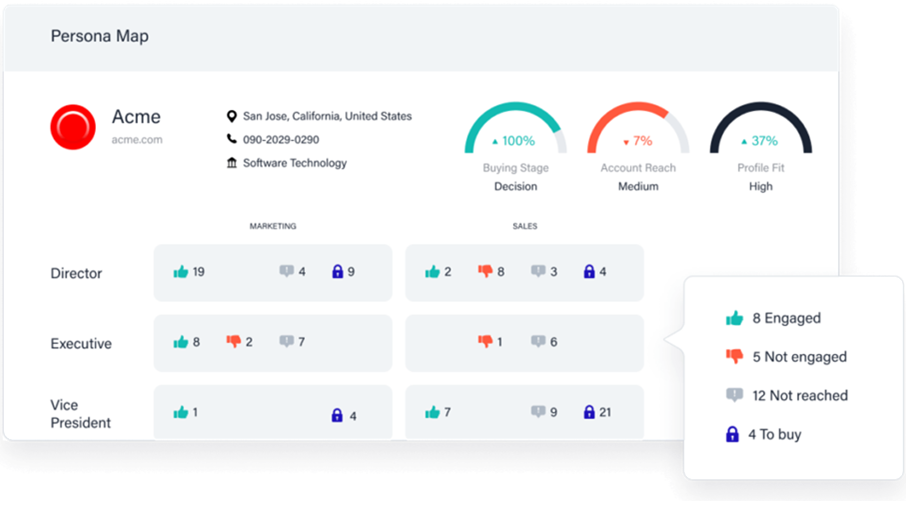 Build segments like “EMEA fintech over $1B revenue showing cloud security intent with 3+ site visits in 30 days.”
Build segments like “EMEA fintech over $1B revenue showing cloud security intent with 3+ site visits in 30 days.”
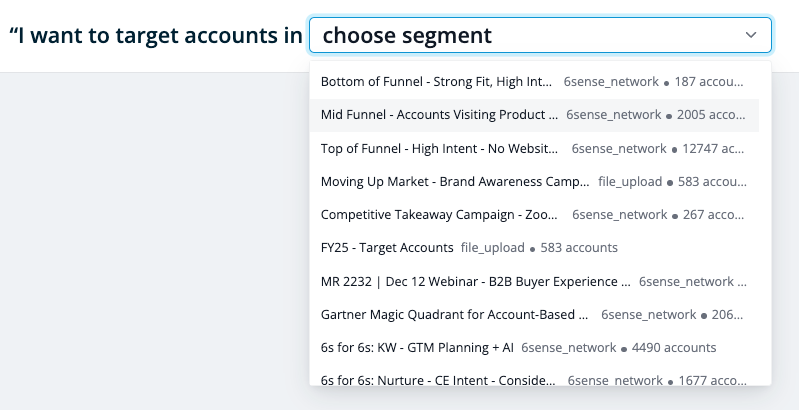
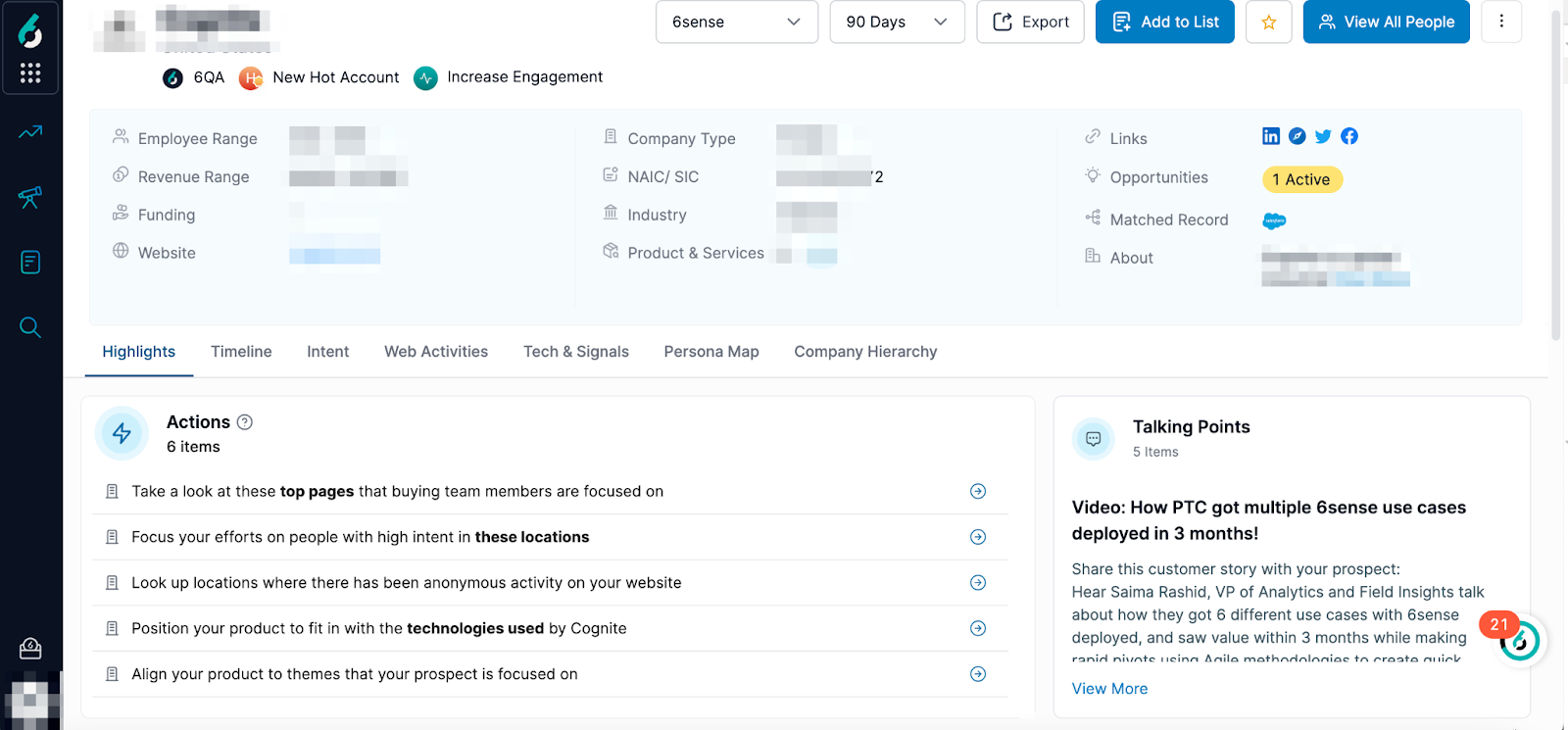
Prioritized lists and alerts turn signals into activity.
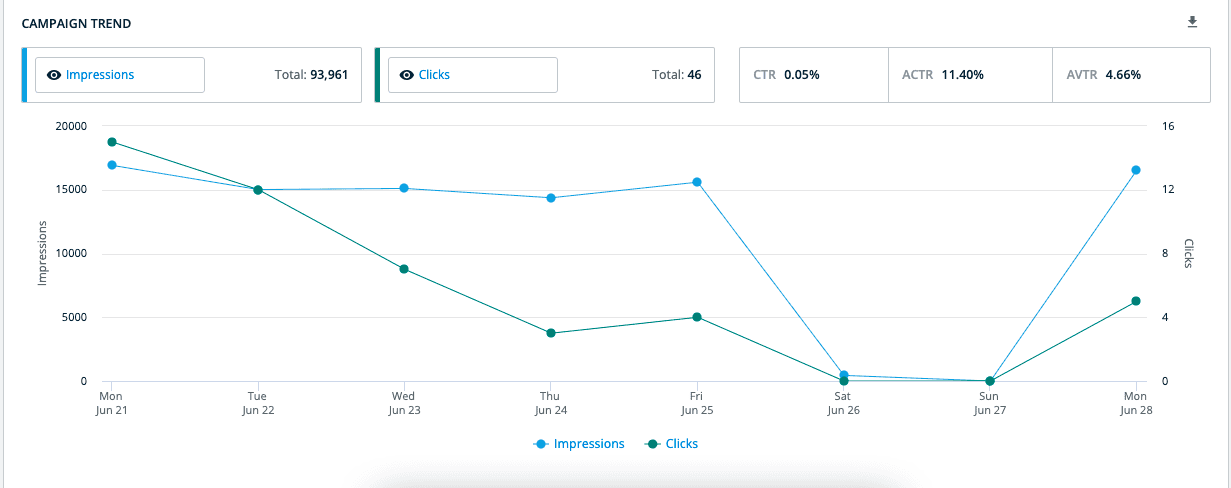
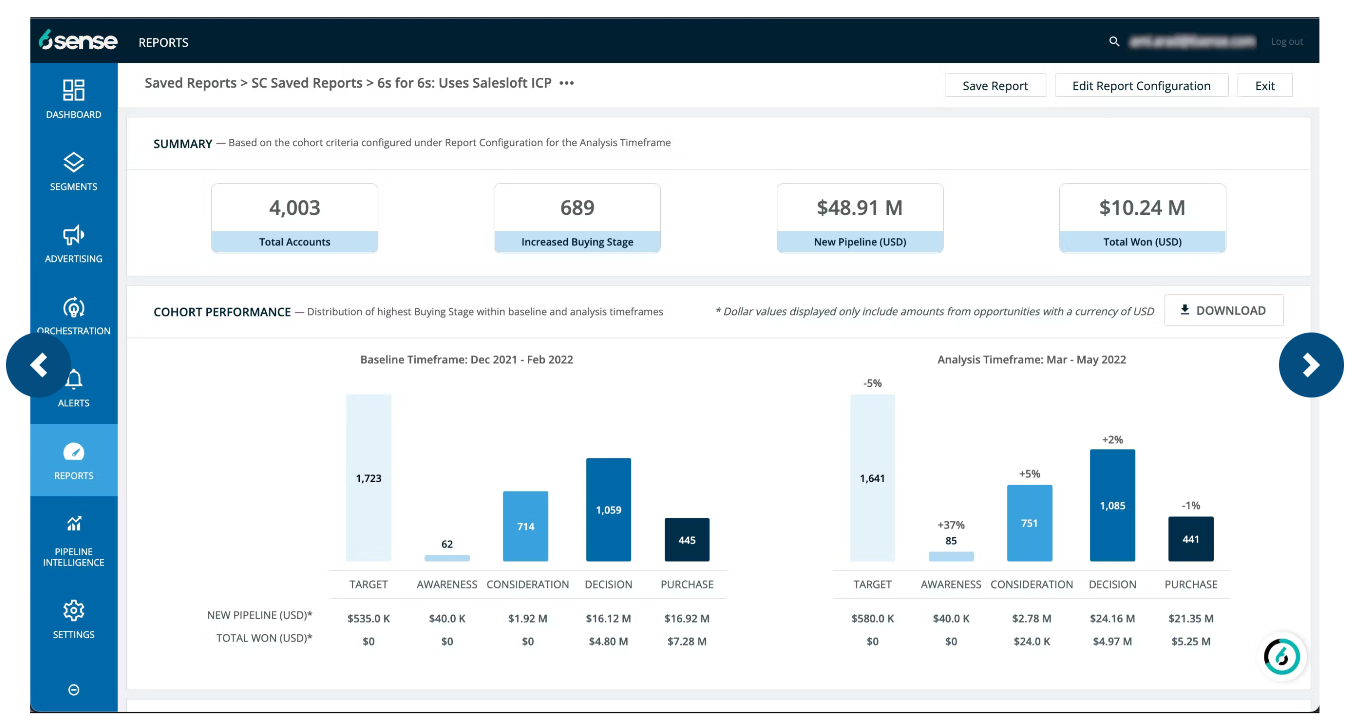
Top choice when you need predictive prioritization across a large account universe.
Premium pricing and a learning curve. Requires discipline with data.
Mid to large B2B with longer cycles and multi-channel programs where an AI-driven focus unlocks sales capacity.
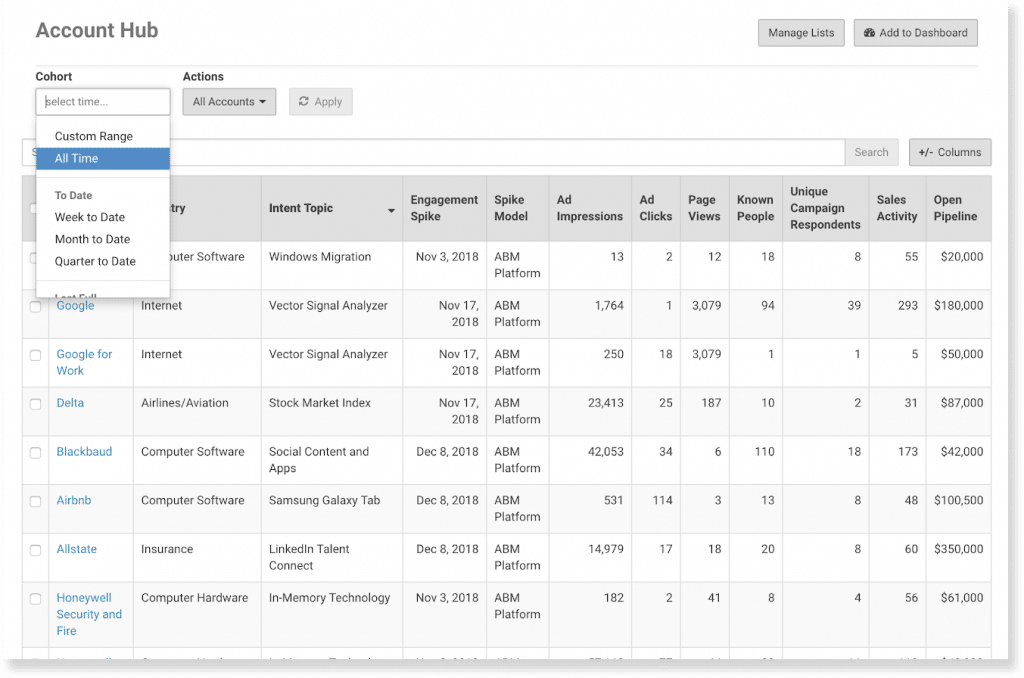
Terminus combines ad execution with clever touches like email signature marketing and native chat to help teams coordinate plays across channels.
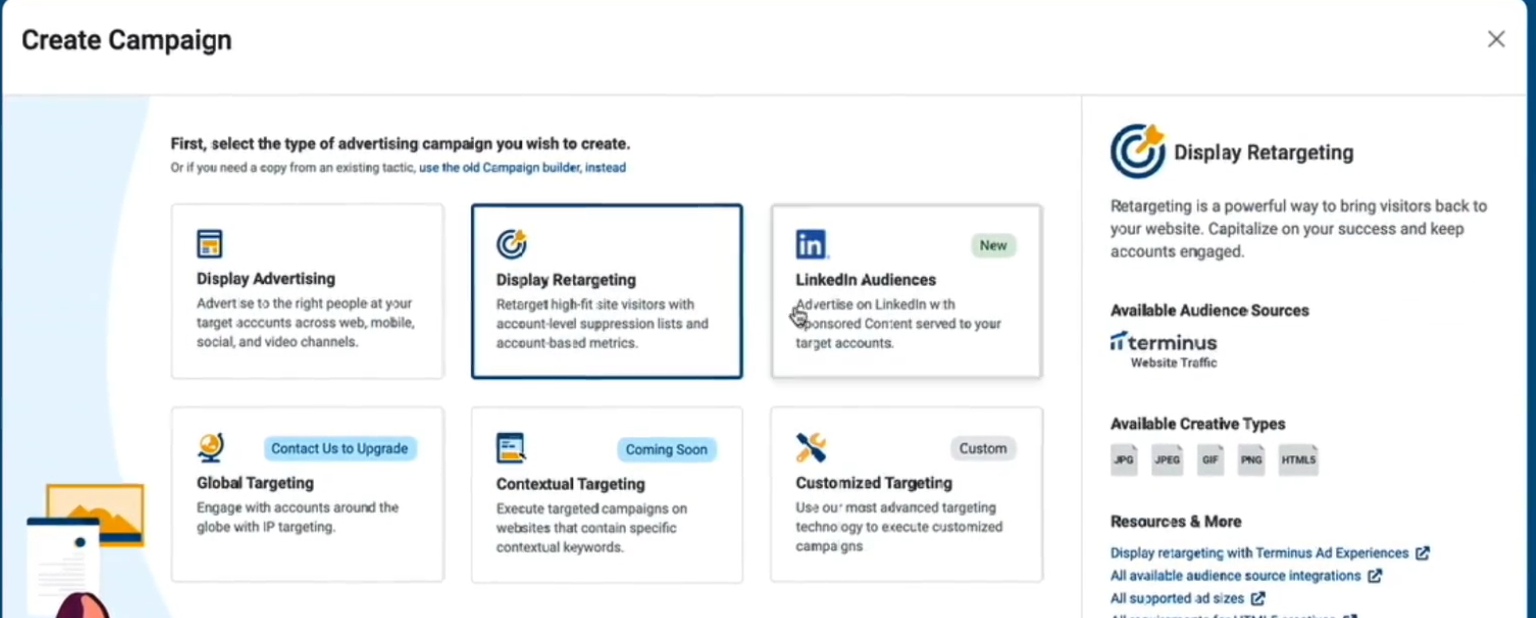

Trigger sequences in Outreach or Salesloft when accounts spike.
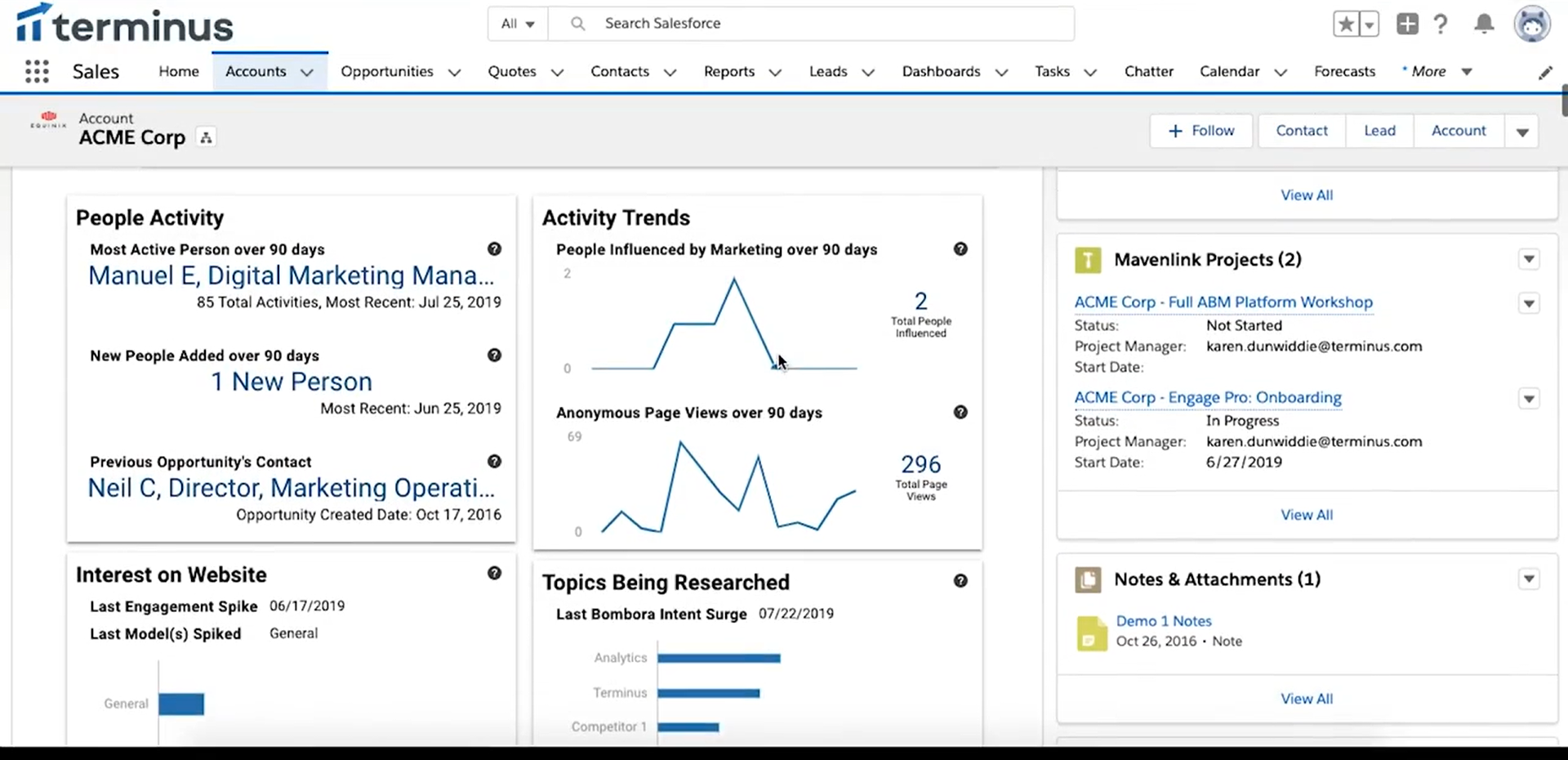
Explore integrations in the Terminus docs.
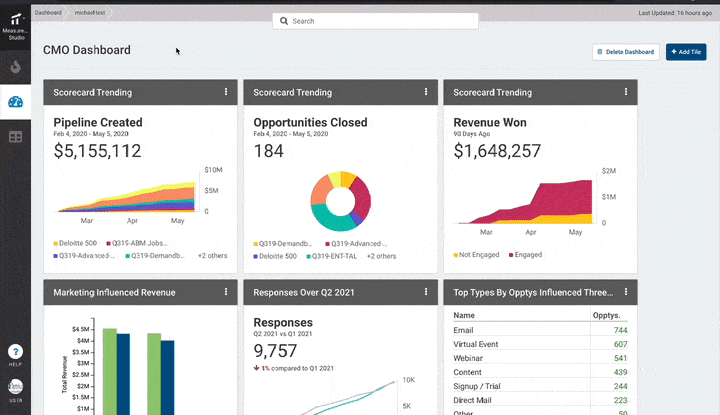
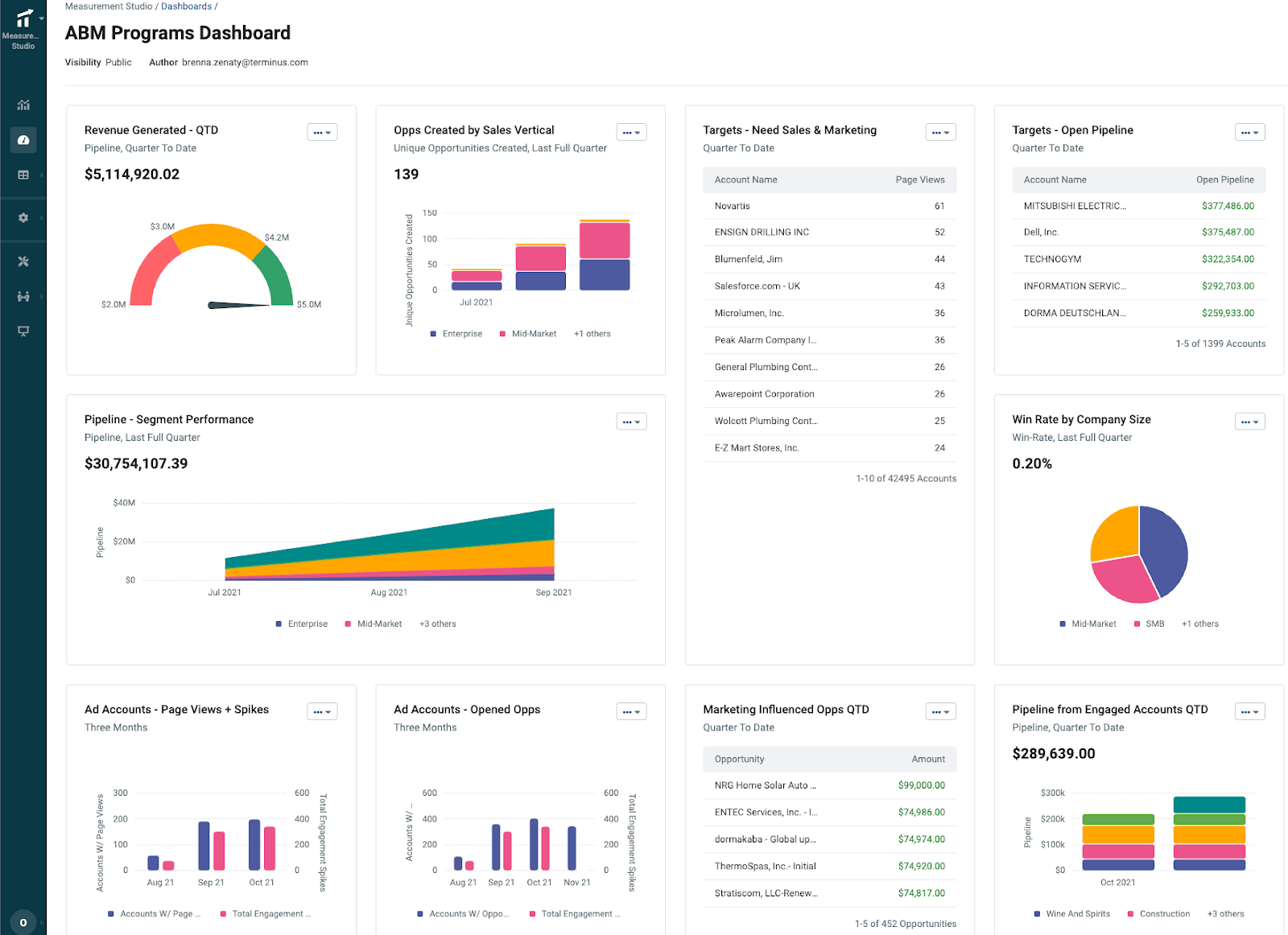
Strong orchestration across ads, chat, signatures, and analytics without stitching five tools.
Premium pricing and some limits depending on plan and integrations.
B2B teams with multi-channel motions that want sales to act on the same cadence as marketing.
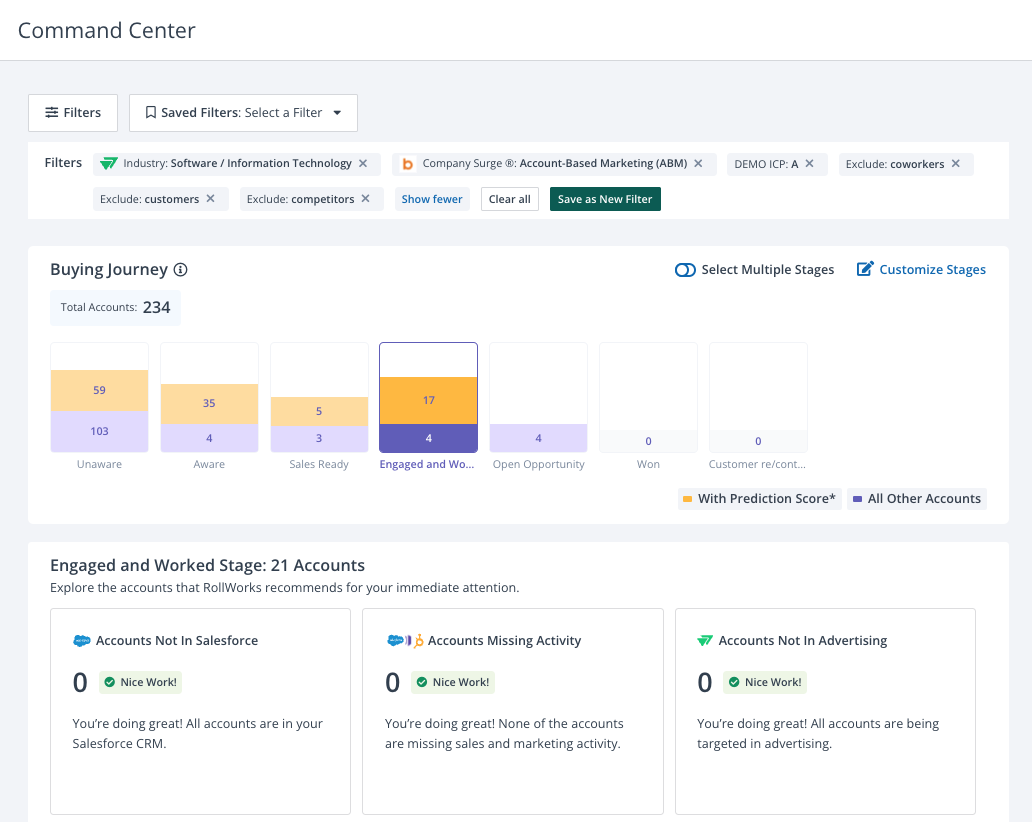
A popular entry to enterprise ABM ads. Strong account targeting and audience management with approachable workflows.
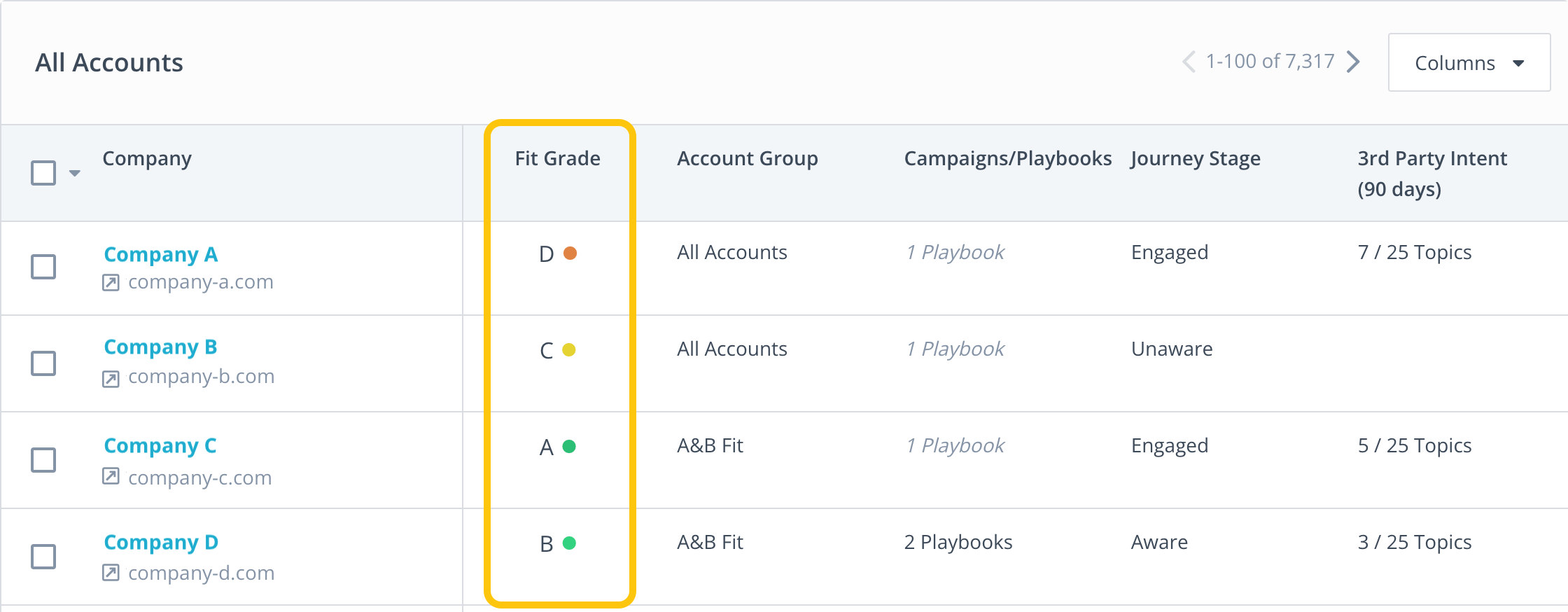

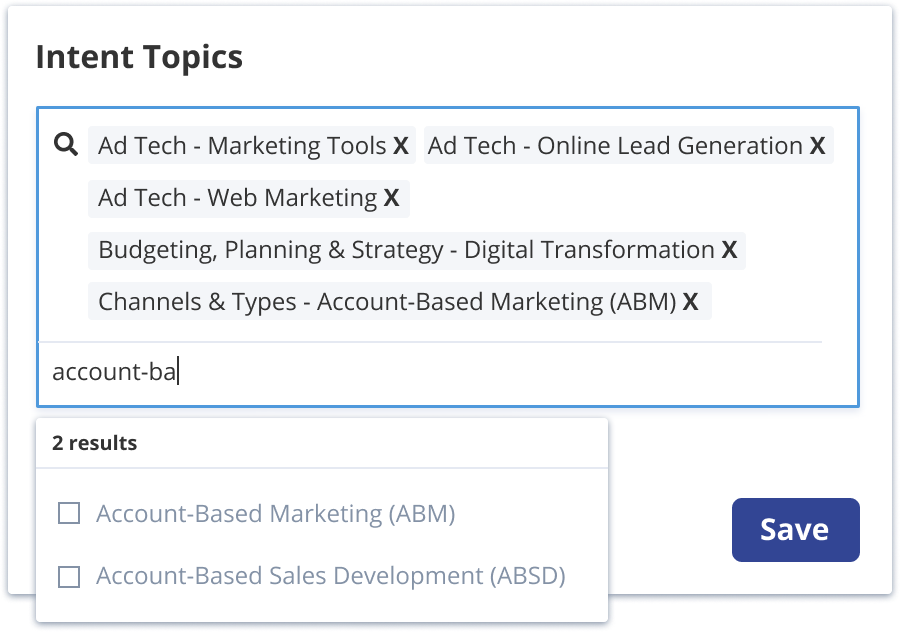
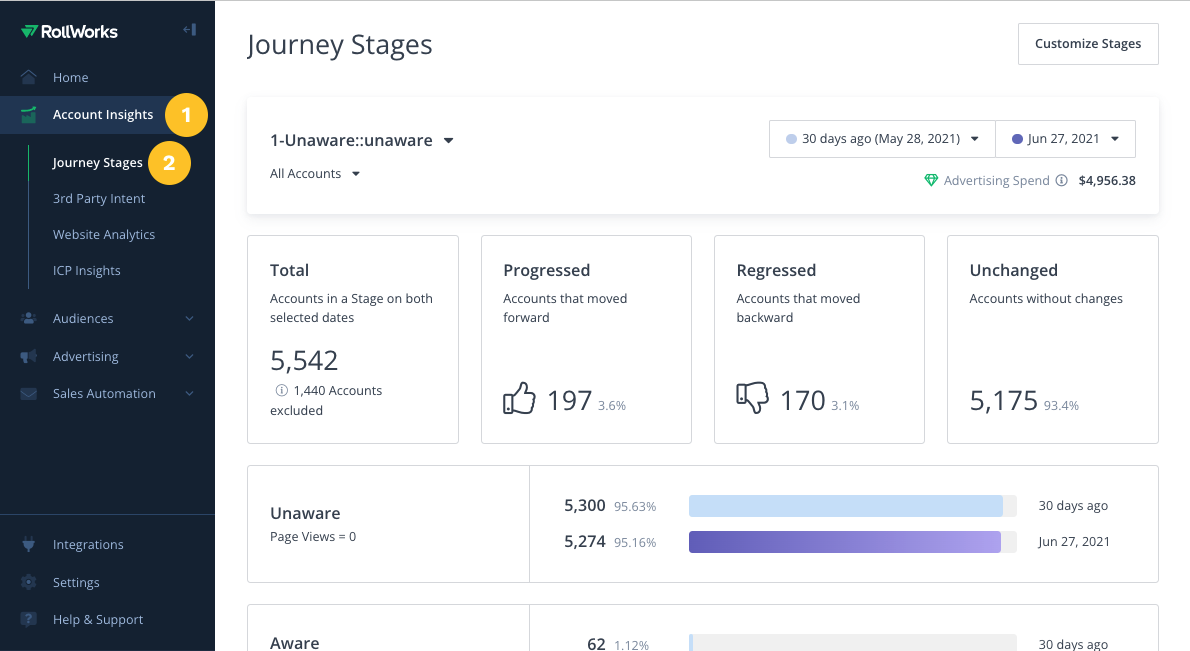
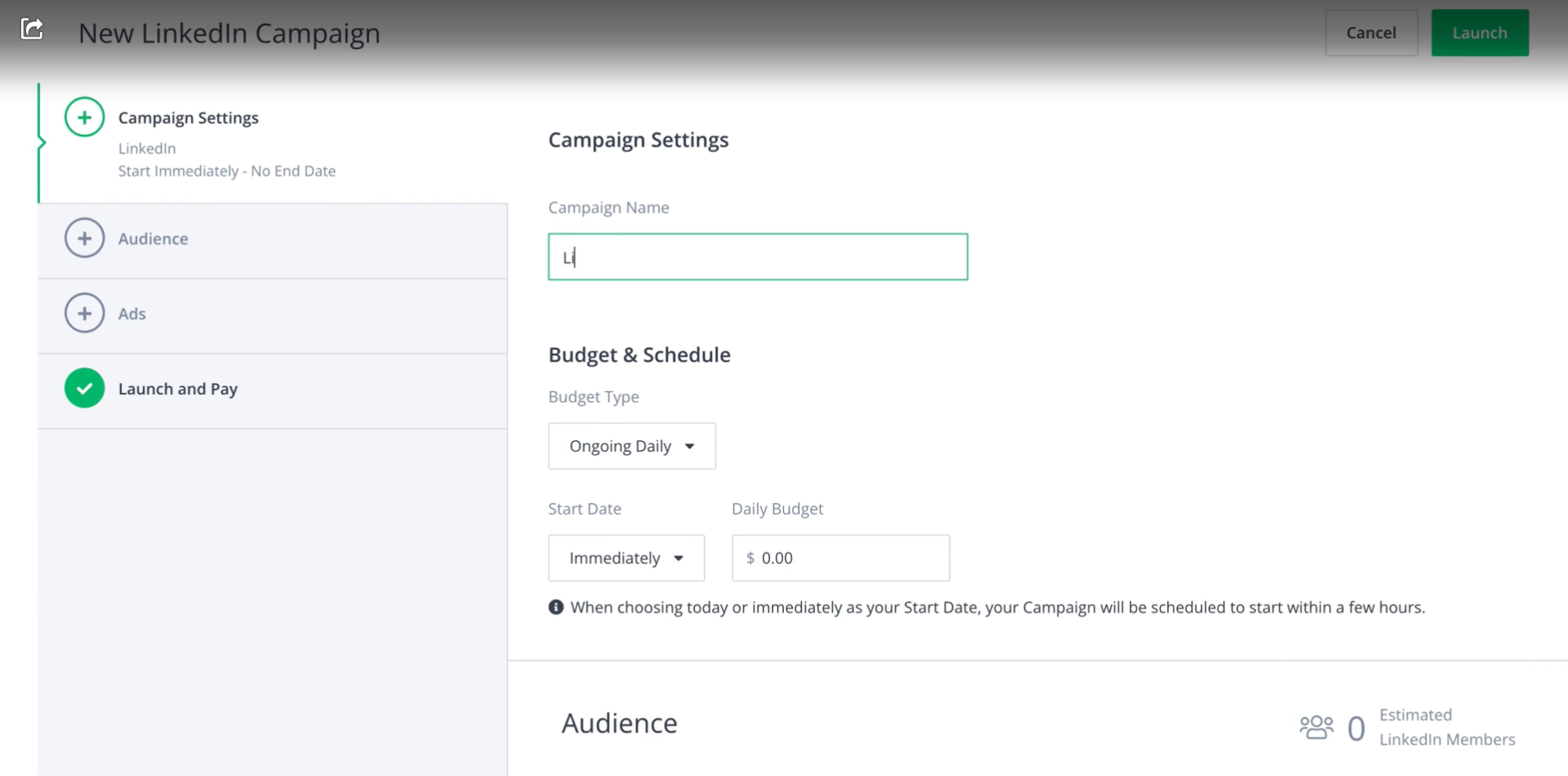

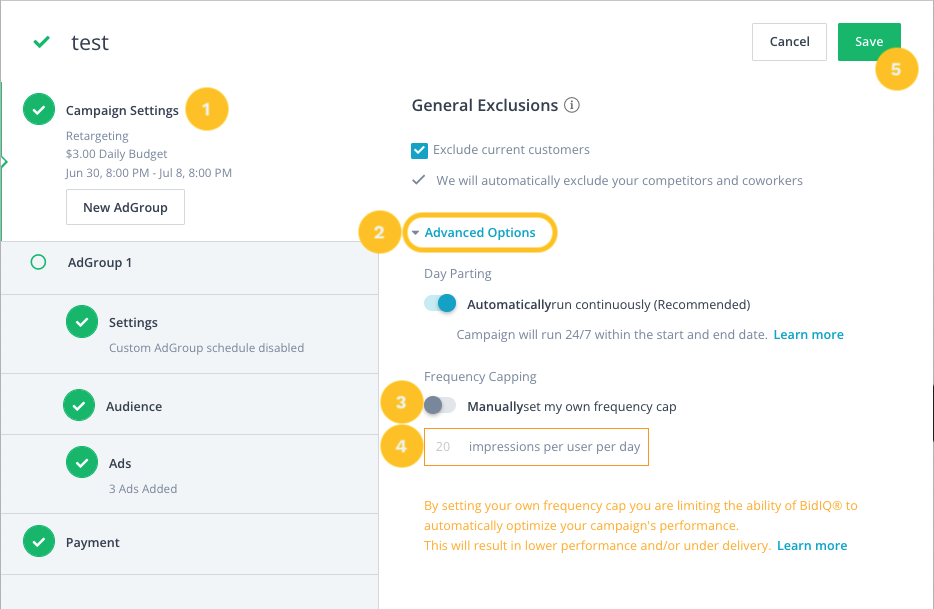
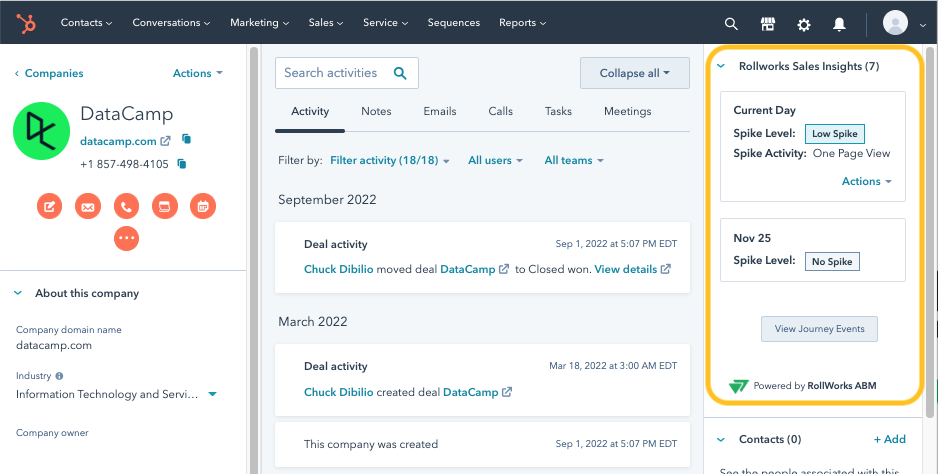
To know more about RollWorks’ integrations, you can read this guide dedicated to RollWorks.
Ad DNA and account targeting at scale, straightforward campaign setup, strong account-level ad metrics.
Requires real ad budgets and still leans ad first. Some feature limits and gaps depending on your stack.


Mid-market teams that want a scalable advertising-led ABM program with clear account insights.

Common Room turns community and organic signals into account-level intelligence that revenue teams can act on.
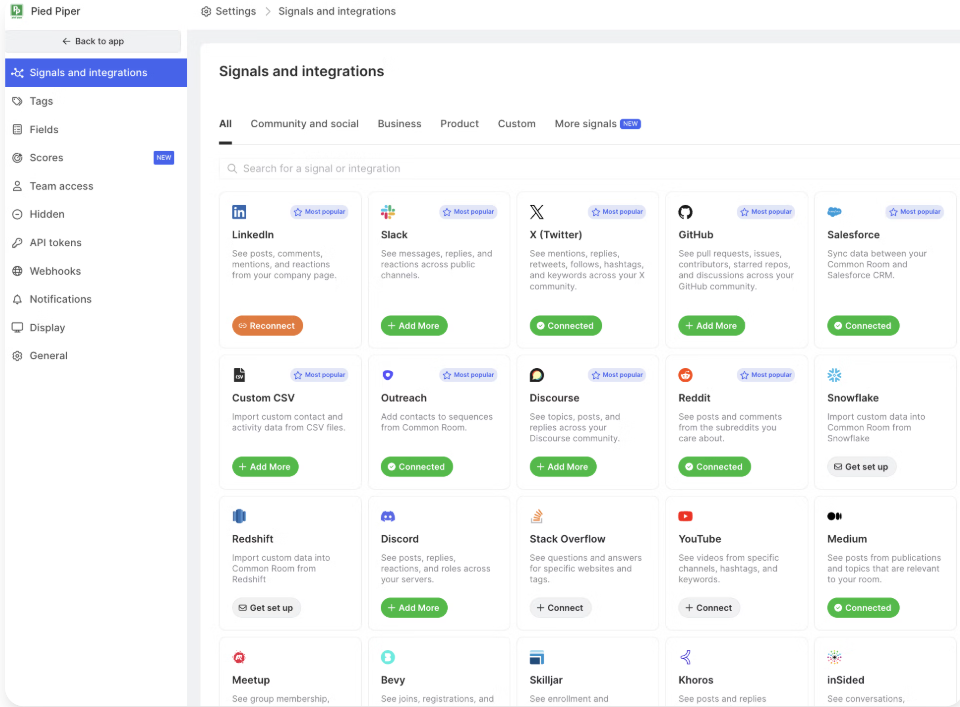
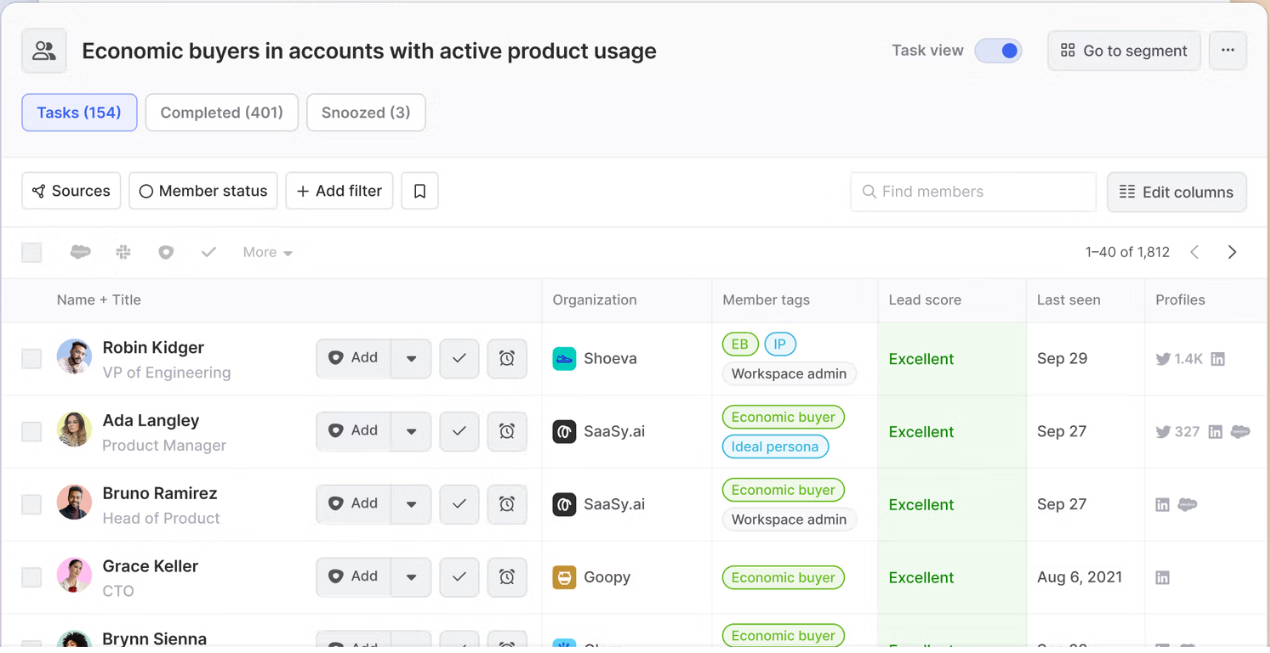
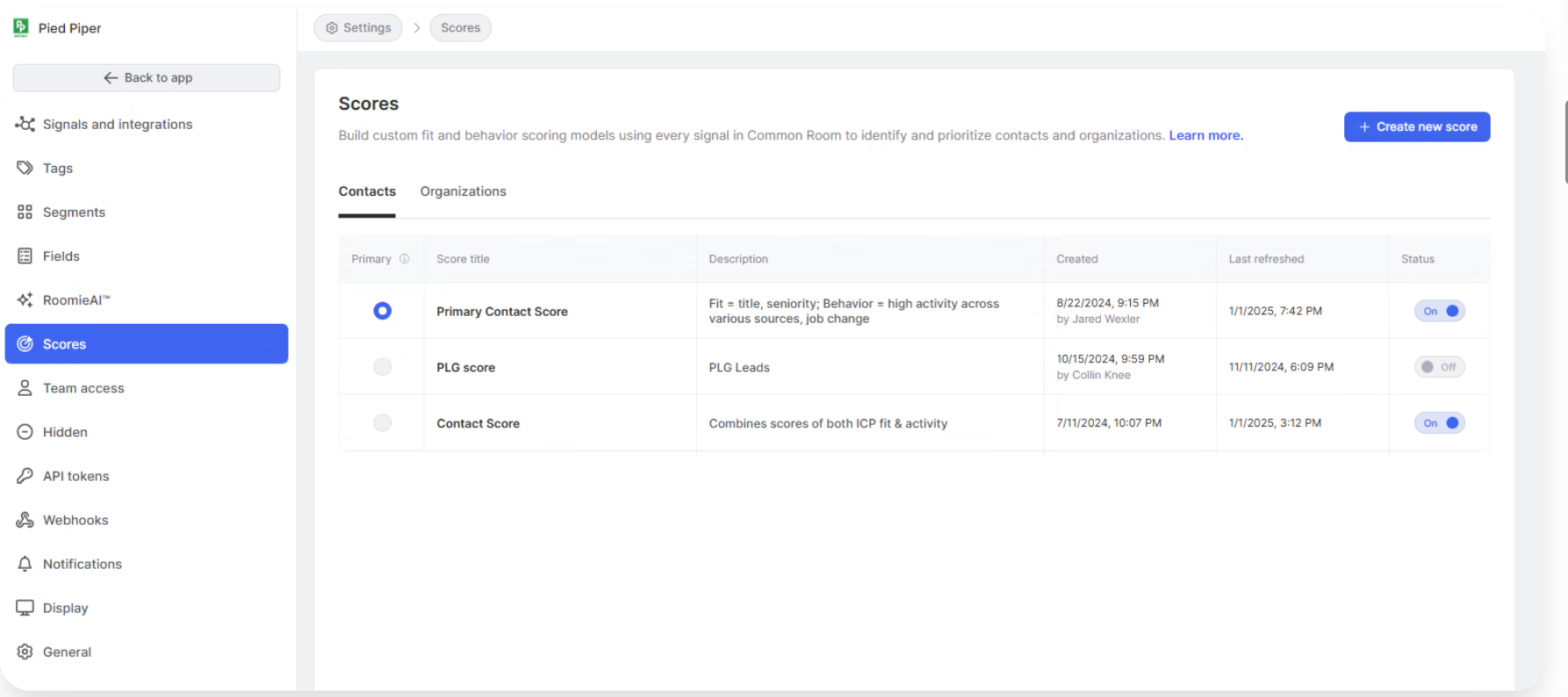
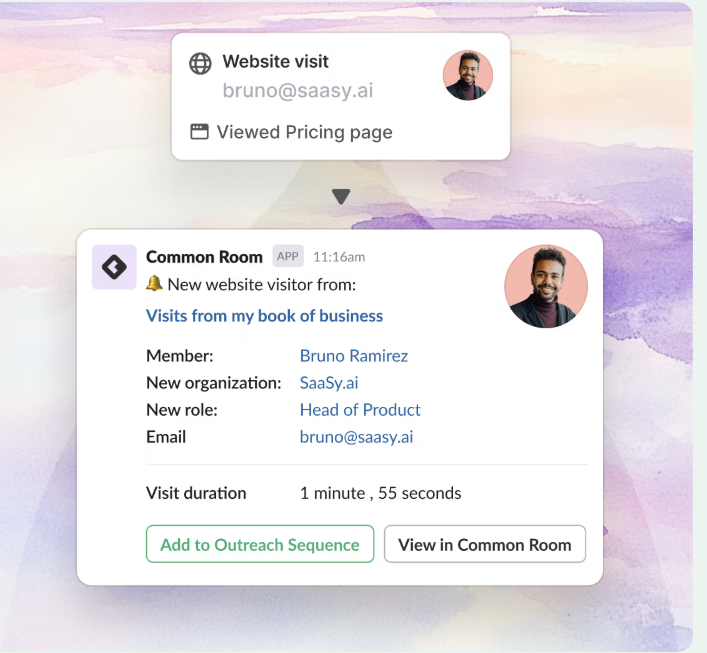

Common Room enriches profiles with data and connects to sales tools and product analytics to make the signals usable by GTM teams.
Measures community growth, account engagement over time, and impact on pipeline for community-led motions.
Great example when your GTM gets real signals from Slack, GitHub, forums, and social. Surfaces the right people and accounts early.
Not an ad or web personalization suite. Needs an active community to shine and can be pricey at scale.
Developer-first or PLG teams pairing organic momentum with sales. Works well alongside a LinkedIn-first platform like ZenABM.
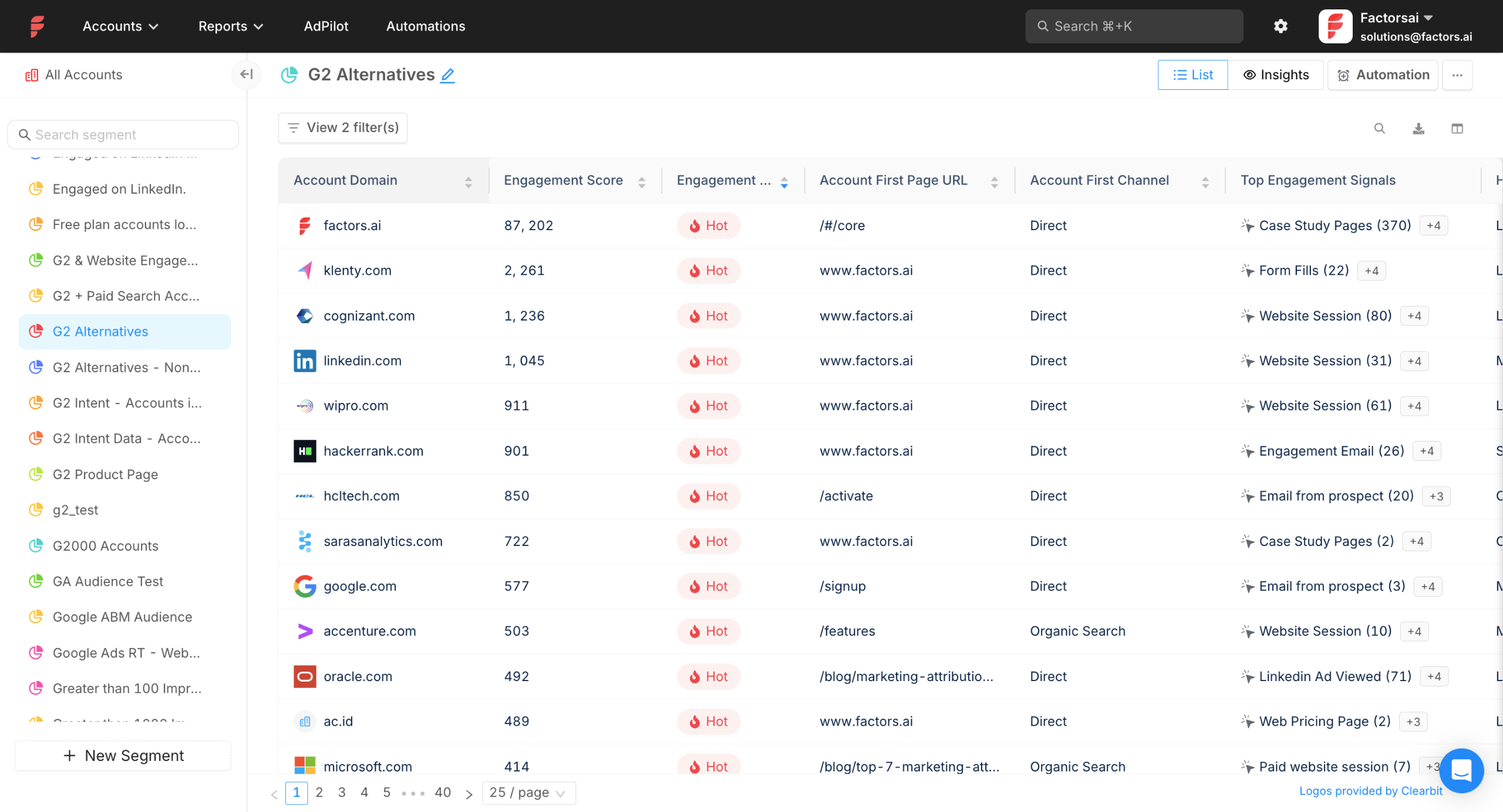
Factors.ai focuses on ABM analytics and revenue attribution with modular pricing.
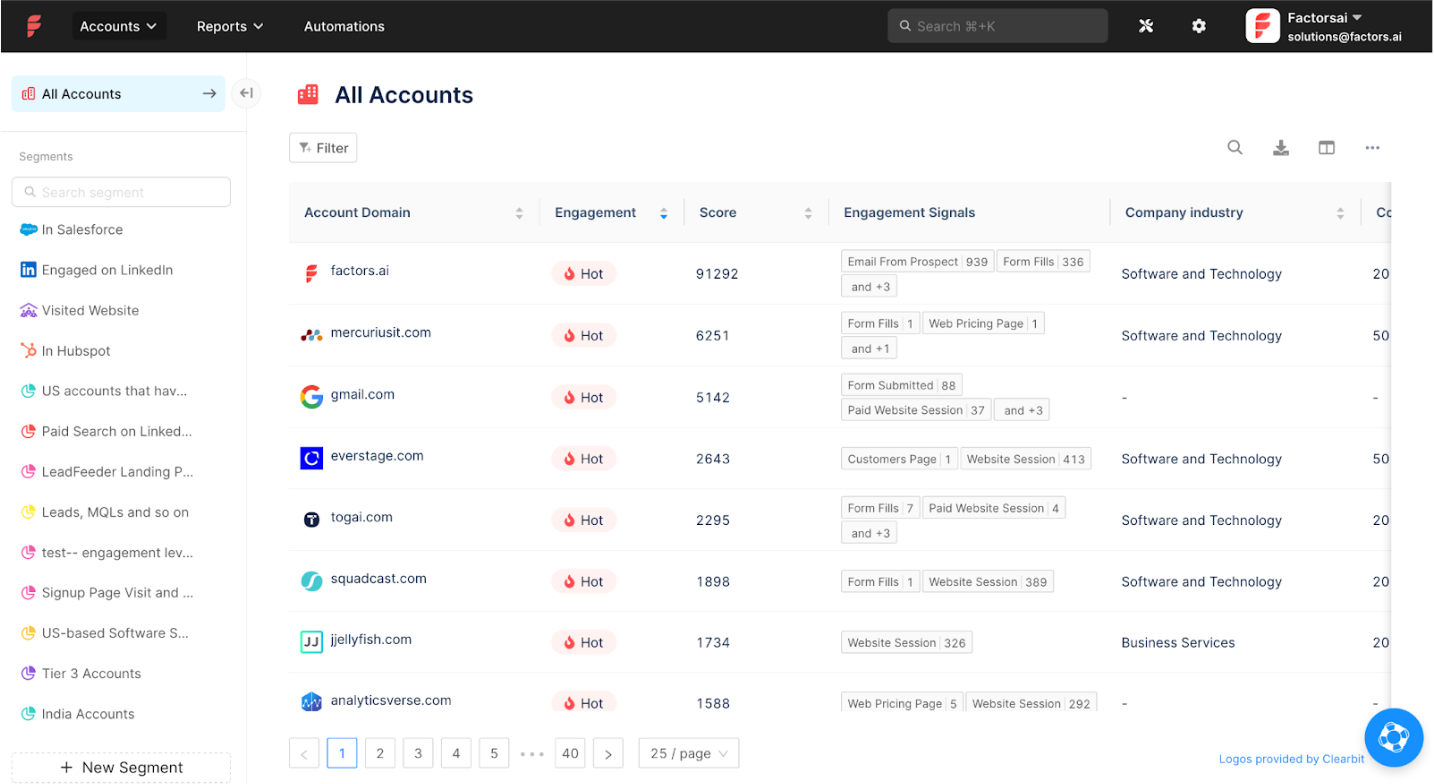
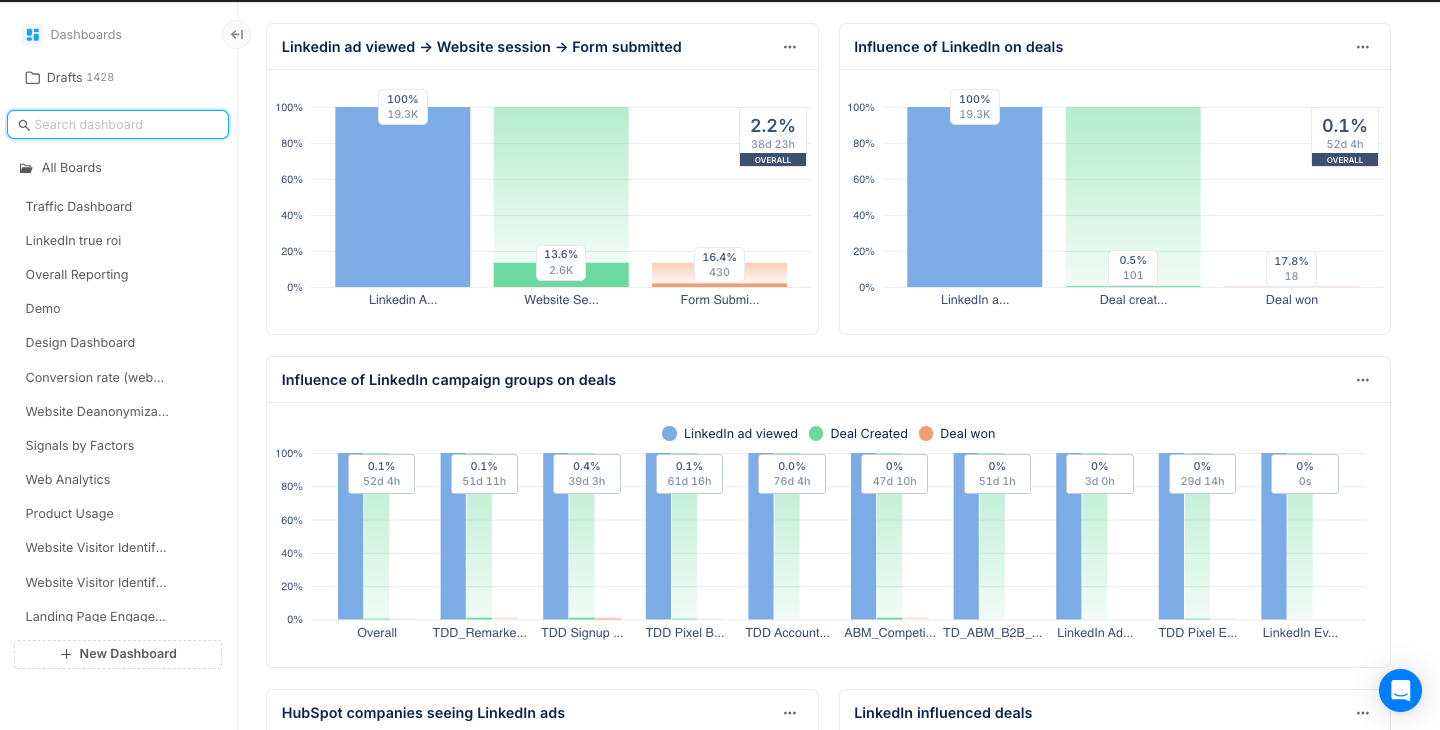
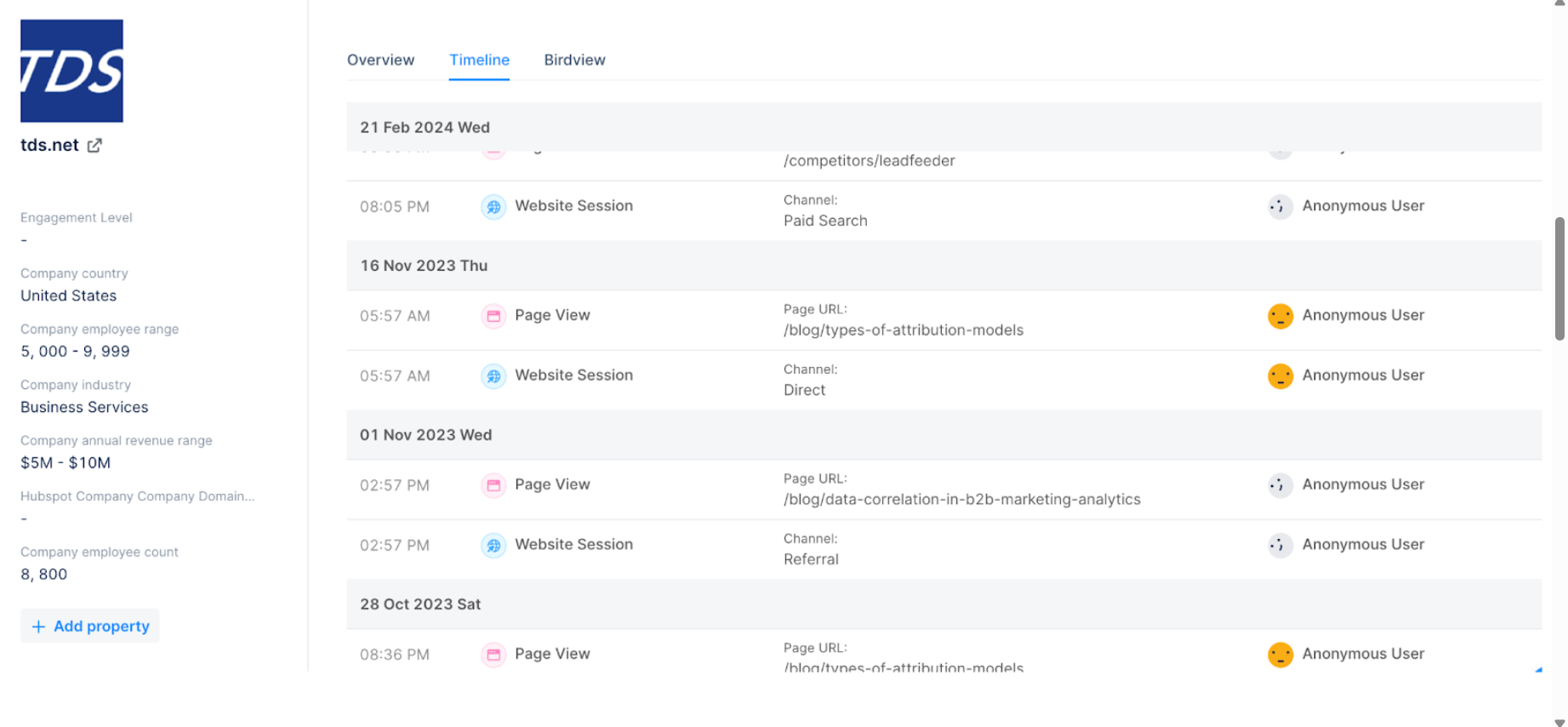


Transparent pricing with a free tier and paid plans that scale by volume. Cost can rise with growth, so plan for usage.


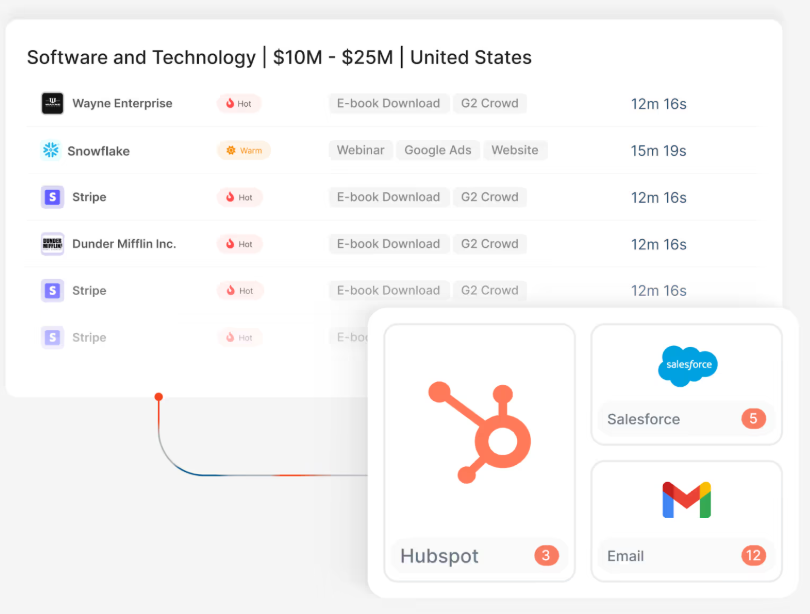
Modular, analytics-first, and budget friendly at lower volumes.
Costs can balloon with usage and some capabilities are add-ons. You will still need execution tools in your stack.
Ops-led teams that want clearer attribution across an existing toolset.
These seven are the best ABM platforms examples because they each fit a precise motion.
If you run a LinkedIn-first ABM program, ZenABM is built for that job. If you need all-in-one orchestration at scale, Demandbase and 6sense are proven choices.
If your motion is community-led, Common Room turns people signals into account action. RollWorks is a solid path to ad scale. Factors.ai gives you attribution clarity without forcing a full suite.
Match the platform to your motion, your data reality, and your budget. That is how ABM stops being a theory and starts showing pipeline.
Anytime, you can try ZenABM for free or book a demo.